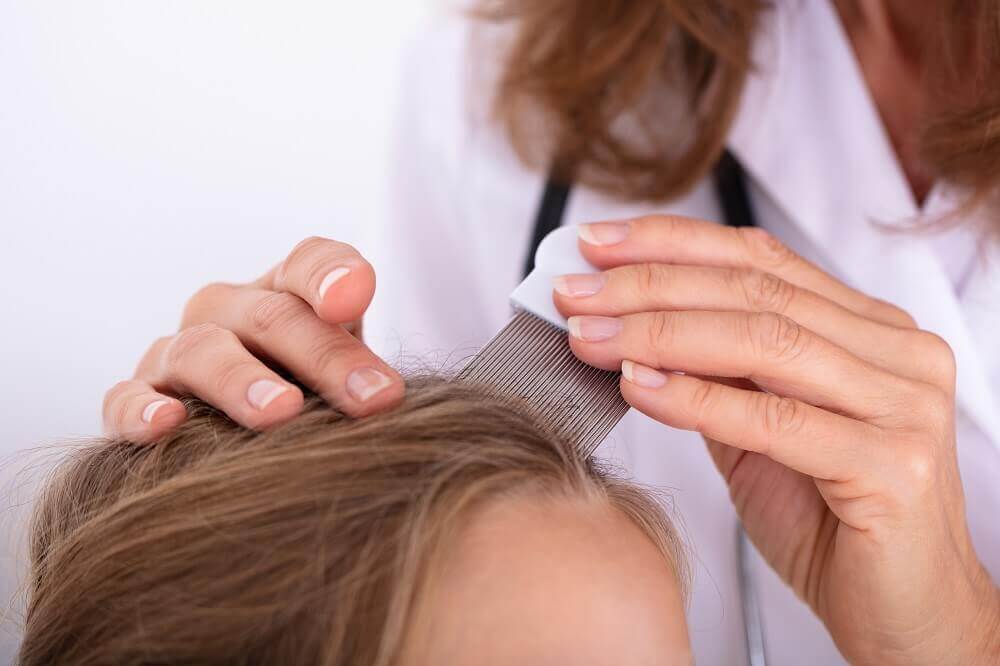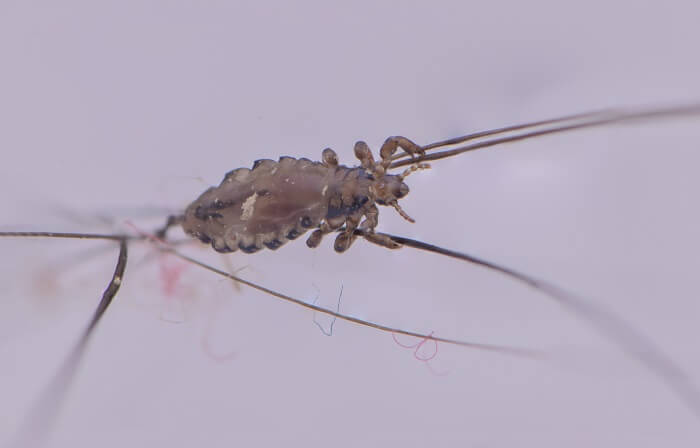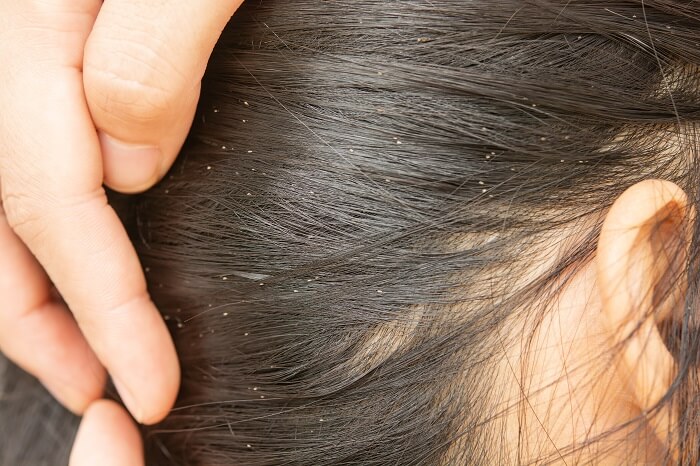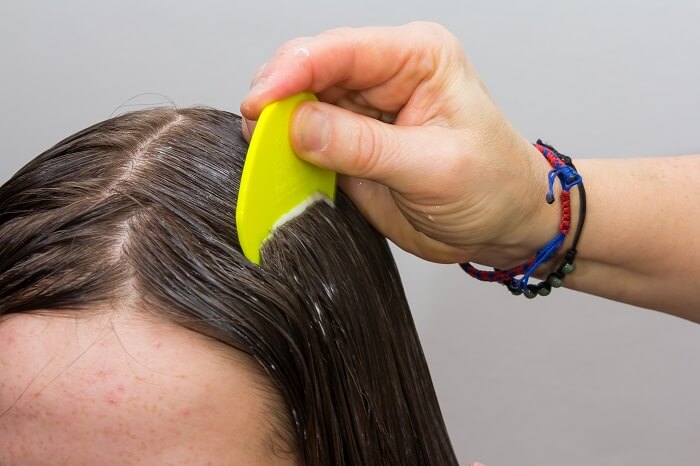Head Lice Treatments from U.S. Dermatology Partners
Understanding Head Lice & Treatment Options
Head lice is a common condition, especially among children. While it may sound creepy or embarrassing to have small mites (or nits) in your hair, it’s actually a very manageable condition that is typically easy to treat right at home. On this page, you can learn more about how to get rid of lice from your head and your home.
Find This Service Near You
What Are Head Lice?
Head lice are small, parasitic mites that infect the scalp and cause itching and sometimes lead to the development of a rash around the hairline. While it can be itchy, irritating, and a little uncomfortable, head lice are common and fairly easy to treat. It’s important to understand that having lice doesn’t mean you’re unclean. These mites are, unfortunately, easily spread from one person to another even if you have clean hair. Luckily, they can’t fly or jump, but they can quickly crawl from one body to another. They can also be spread by sharing hats, headbands, brushes and combs, bedding, or headphones. Children often spread lice by sharing toys.
Are There Different Kinds of Lice?
There are different types of lice. They are often categorized based on where they are found on the body, so you may hear a dermatologist or other professional refer to them as head, pubic, or body lice. Head lice, which we’re discussing on this page, are the most common form of lice and are often spread among young children. Pubic lice, or crabs, are often transmitted during sexual contact. While they’re most often found in pubic hair, they can also attach to coarse hair on other parts of the body like the eyebrows, beard, chest, or armpits. There are rumors that pets can carry and spread this form of lice, but this is inaccurate. Body lice are found on any other part of the body, and they may not necessarily only affect areas with hair. These lice often live in the seams of clothing, in bedding, and furniture, returning to the host a few times a day. Because of this, body lice can be very difficult to eliminate.
Who Develops Head Lice?
Anyone at any age can develop head lice, but the condition is typically developed by school-aged children
and younger children who attend daycare or other childcare. Caucasians are the most likely ethnic group to develop lice. People with any hair type (straight, curly, dyed) can be affected by hair lice. Women (especially young girls) are more susceptible to head lice. In most cases, due to having longer hair.
What Are the Symptoms of Head Lice?
The earlier you identify the lice, the easier it will be to get rid of them, so it’s important to understand the life cycle of lice and know what they look like at each of their three stages: nit, nymph, and adult lice.
You may see lice eggs, or nits, that attach to the base of the hair. It can be difficult to see them clearly with the naked eye, and nits can be mistaken for dandruff or dry skin. You may need to use a magnifying lens to verify exactly what you’re looking at. After the eggs hatch, you’ll see a lice nymph, which is an off-white juvenile mite that gradually grows into the full-size adult louse, which is typically a tan color. In most cases, both nymphs and adult lice are easier to identify than nits because they move across the hair and skin. Head lice are most often identified in the hair behind the ears and at the base of the scalp.
What Treatments Are Available for Head Lice?
If a person has an active head lice infestation, they need to be treated to remove the lice, nymphs, and eggs. It can also be beneficial for anyone who shares a living space, especially bed partners, to receive treatment at the same time. Treatment using pediculicides (medications that kill lice) should be performed on an active infestation after eggs have hatched but before new eggs are laid. It can be hard to determine the exact timing, so retreatment is usually recommended. Some prescription pediculicides are also partially ovicidal, meaning they kill eggs. These products are best to ensure lice are removed in the fewest number of treatments. However, even if the pediculicide you use is ovicidal, it may not remove all newly laid eggs, so retreatment may still be necessary.
While medicinal treatments are readily available, it can also be beneficial to destroy the lice habitat by removing hair, making it easier to manually remove the lice and nits.
Recommended pediculicides and other treatments to remove lice and nits include:
- Over-the-counter pyrethrin products – Usually applied via a shampoo, these products have a variety of brand names with formulations that impact how they work. For best results, it may be beneficial to apply vinegar to the hair before washing with the pyrethrin shampoo as vinegar can dissolve the sticky substance that attaches nits to hair, making the treatments more effective. While the process of shampooing with over-the-counter pyrethrin products can physically remove the nits, it won’t kill them, so any nits left behind will need to be removed via retreatment after hatching.
- Prescription medicated shampoos – In some areas, lice have become resistant to over-the-counter products, so these products don’t effectively eliminate lice. Additionally, over-the-counter products are ineffective at removing lice eggs. For these reasons, your dermatologist may prescribe stronger products that remove both the lice and the eggs. You may be prescribed benzyl alcohol (topical), Ivermectin (topical and/or oral), Spinosad (topical), or malathion (topical).
- Combing – Work a fine-toothed comb through wet hair to manually remove lice and some nits.
- Dehydration – A specialized hot air device (like a very powerful hairdryer) can be used by some dermatologists to kill lice. These professional, in-office treatments dry out the lice and nits.
When completing headlice treatment, don’t use the same medication in excessive quantities or retreat more than twice unless you receive explicit instructions from your dermatologist. Lice may become resistant to the medication, making it harder to treat. For the same reason, it’s not advisable to use multiple types of lice treatment simultaneously. It can feel unpleasant to think of having lice, but the best thing you can do is treat them once and correctly. Then, try not to obsess over them.
Can Head Lice Be Prevented?
It’s important to take steps to prevent the spread of head lice. Since head lice are so common among children, you should make sure your children understand how lice are spread, so they don’t share hats, hairbrushes, press their heads together with other children, or engage in other activities that can spread lice. If one person in the family has head lice you should work to prevent the spread to other members of the family. Don’t hug or get too close to the infected person, check other family members regularly for signs of head lice, and wash hats, clothes, and bedding of the affected person in hot water. You should keep your home clean and wash surfaces, clothes, and bedding, but it’s not necessarily as important as removing the lice from the affected persons since head lice will die fairly quickly without their human hosts.
Some tips to minimize risk for spreading head lice include:
- Apply heat – Lice and eggs (nits) will die after being exposed to heat higher than 130 degrees for at least five minutes, so put any items that may have lice on them through a high heat wash and dry to remove the head lice.
- Seal it – If you have items that can’t be washed or dried, seal them inside of a plastic container for at least two weeks to kill all lice, nymphs, and nits.
- Vacuum – To remove shed hairs that may have nits stuck to them, you should vacuum floors, furniture, and other surfaces.
- Sanitize hair products – Soak any hair products in very hot, soapy water for about ten minutes. Take special care to clean the tools used to remove lice.
- Cover your head – If you don’t have lice and you’re helping a child or other loved one remove lice, keep your head covered with a shower cap to avoid transfer.
- Recheck – After you’ve cleared everyone of lice, recheck them after a week to make sure the treatment was effective.
*Results may vary by individual





